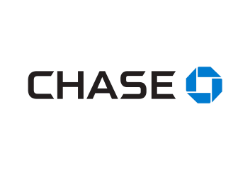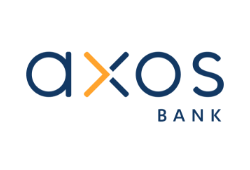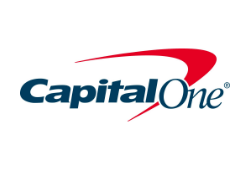Teaching children how to manage money and save has never been easy, but if you start budgeting with your kids early, it will be helpful in their future life. Luckily, you are not alone in this.
Chase First Banking is a debit card for your kids connected with a checking account. It is free and comes with a mobile app and educational tools to help your kids learn how to save money. Keep reading our review to find more about this product.
FDIC-insured; Mobile app & educational tools
Fortunly Rating
Fortunly's Rating: Our editorial team determines the rating based on a set of evaluation criteria developed for each product and service category.
- No monthly fees
- 16,000 Chase ATMs
- User-friendly mobile app
- Allows your children to set savings goals
- No interest accrual
- Zelle service is not available
- No overdraft service
- Doesn’t support any digital wallet
Chase First Banking Overview
Launched in 2020, Chase First Banking is an all-in-one financial tool designed for both parents and kids with an idea to help families to manage budgets and control finances.
The product comes with a debit card that’s in the kid’s name but is connected to the parents' checking account.
Through the mobile app, parents can control spending, set saving goals, and manage chores. On the other hand, kids have the freedom to manage earned money as they want and get a chance to learn how to develop healthy financial habits.
This financial product is designed for kids from the ages of six to seventeen, with the idea of helping them learn about the importance of proper money management.
The Chase teen debit card is linked to the parent’s Chase First Banking account. It is completely free and has no monthly balance requirement, but you need to be a Chase customer to open this account.
In other words, you need to have a checking account at Chase already. As soon as you open the account, you can start teaching your kids money management through the Chase mobile app.
Chase Bank is a subsidiary of JPMorgan Chase & Co, with over 200 years of experience in banking and 4,700 branches across the United States. As the bank depositor, you will be protected by the FDIC insurance up to $250,000. In the highly unlikely case that something happens to the bank, you may rest assured that the money you invested stays safe.
Before we dive deeper into our review, we need to highlight that this account is designed for existing Chase customers and kids aged six to seventeen.
You should not mix it up with Chase High School Checking, which is an entirely different financial product designed for teenagers aged 13 to 17.
How Chase First Banking Compares to Other Similar Products
How It Works
Chase’s debit card for kids is designed with an idea to help parents control how much their kids spend and at the same time allow kids to manage their budget through a mobile app. The kid’s debit card is linked with the parent’s checking account, so at any time, you will know how your child is spending the money. Of course, you will be the one who is responsible for transferring funds to the kid’s account, too.
Before you start applying for a child debit card, make sure that you meet Chase’s requirements to open a new checking account connected with your kid’s card. Chase debit card for kids is available only for existing Chase customers, meaning that you need to have a Chase bank account already or apply for one first.
The application process is quick and straightforward. In record time, you can have a new checking account, and your kids will get debit cards made out in their names. However, there are additional requirements that you need to fulfill, too. First off, you can apply for a debit card for your kid only if they are between six and seventeen years old. Secondly, the maximum number of accounts you can open is five per parent.
Here is the information you need to provide in order to open a Chase bank kid account:
- Your personal information (name, surname, address, date of birth. etc.) and Social Security Number)
- Your kid’s personal information and Social Security Number.
- Your login credentials for accessing an existing Chase checking account.
A Chase bank representative will review your application almost immediately, and since there are no additional requirements, soon you will be able to set up the account online and start using it.
The application procedure is fast and painless, going directly through the website. You have to click on the “Open an account” button at the top right corner of the screen. If you have an existing checking account, you can sign and complete your application for a Chase kids card faster.
In case you are not a Chase customer, you need to apply for its checking account first. This might be a good solution for consumers who don’t have one anyway, as Chase offers some of the top checking account options around, with a few fees and no account balance requirements. You can find a wide range of checking accounts on the bank’s website, with different features and service fees. We are sure that you’ll find the one that’s right for you.
How to Fund a Chase Teen Debit Card
Once you open an account and your kid gets a debit card, you first need to fund it. The only way to make a deposit is to transfer money from your checking account through the mobile app or desktop client. Unfortunately, direct deposits, like paper checks and peer-to-peer transactions, are not available. While many clients will not see this as a problem, those whose kids are old enough to earn money by themselves might not like it.
Features and Tools
There are two ways to manage your kids’ account: the desktop client and the mobile app. The mobile app is also available for your kid to transfer earned money to one of the savings categories, send you real-time requests, or check their available budget.
The money management tool has three categories - Spend, Save, and Earn, and all of them enable both parents and kids smooth and fast money management. We’ll describe each of the categories separately, so you can understand how they work.
Spend
Spend is a feature that parents use to set ground rules on how their children can spend the money on their kids’ accounts. It’s a useful tool for parents because it gives them complete control over their kids’ debit cards. For example, you can use it to put daily or weekly limits on how much money your kids can spend.
You can also decide which stores and merchants they are allowed to use and put restrictions on certain shopping categories and places. You also have the option of setting up different spending categories with the spending limits for each one. For example, you can decide how much money your kid will spend on clothes, movies, or video games every month.
Each time your kid uses a card to purchase something, you will be notified. At the same time, the account allows kids to ask for emergency funds in real-time, and you can send money to the specific spending or saving category.
Save
This is the most important tool for teaching kids how to start budgeting and creating their first savings goals. You can help your kids create different savings categories. For example, a savings category for a new backpack or a new pair of sneakers.
There can be several separate savings categories, and you can track the progress of each of them through the Chase mobile app. After you transfer funds to your kid’s card, you can track how they organized their savings.
Earn
The app allows you to set up the regular allowance on the card and can even help you assign chores that will be paid automatically. You can set recurring weekly or monthly payments or pay your child once your assigned task is done.
Fees
The card comes with no monthly service fees, and you don’t need to deposit anything on your new account immediately.
However, all Chase debit cards have fees for foreign transactions and money transfers from ATMs outside the Chase network. They don’t go above the industry standard, though.
For example, if your kid wants to use their debit card on a non-Chase ATM, it will cost $3.00. The same amount will apply transfers or inquiries at ATMs outside the US, while withdrawals at such ATMs will incur a fee of $5.
The bank also charges a 3% foreign exchange fee and a $5 fee if you need to replace your kid’s debit card in a rush (standard shipping of a replacement debit card is free).
Mobile App
Chase has an excellent mobile app that you can easily download and use to manage all of your Chase bank cards and accounts. You don’t need to worry if you don’t have experience with similar bank account management tools.
The Chase mobile app is very straightforward user-oriented. After you click on the login button, all your accounts will appear on the screen. Select the one connected to your kid’s debit card to start with the account management.
Depending on what you want to do - transfer funds, assign a new chore or give a reward to your kid, you need to choose between the three tools - Spend, Save, and Earn.
For example, if you want to assign a new chore, you need to select the Earn tool. From there, you can name the task or choose among some of the predefined categories like “clean the room” or “take out the trash.” You can also add the due date and the reward amount for each chore you create. It’s also up to you to decide how your child can spend the money.
Other things, like setting up a withdrawal limit, or a regularly scheduled allowance, can be easily edited from the app, too.
Customer Service
Our review wouldn’t be complete without mentioning Chase Bank’s customer service. If you already use some of the bank’s versatile financial products, you know that the Chase representatives are very supportive, and the service is excellent.
The phone support is very effective, but you can also contact the representatives via social media channels. They respond from 07:00 to 23:00 during business days and from 10:00 to 19:00 on the weekends. Of course, if you prefer face-to-face service, you can visit one of the numerous Chase Bank offices dotted all around the US.
On the bank’s website, you can also find video tutorials that explain what a Chase kids account is and how to use its budgeting tools. There’s also an educational center, where you can find lots of information about all sorts of Chase products - from savings products and credit cards to financial products for businesses.
Security
Like other financial products, the debit card for kids is protected with the latest security measures. The chip technology protects the card when your kid uses it to pay in the shops with chip readers, and the Chase app supports biometric authentication.
When you use online and mobile banking, your information is secured with 128-bit encryption technology, and a parent can also lock and unlock the debit card online.
Potential Downsides
This debit card for teens and kids is available only for Chase customers, meaning that if you don’t have a checking account already, you must open one. The bank offers different types of checking accounts, so you’ll find one that’s good for you easily. One downside to this account is that it generates no interest whatsoever.
We already mentioned that the only way to fund kids’ cards is to transfer money from the checking account. There’s no option to send money through direct deposits or by using paper checks.
Lastly, you cannot connect a Chase First Banking debit card with digital wallets like Apple Pay or Google Pay.
Our Verdict
In our opinion, a Chase debit card is a good option for parents who want to teach their kids how to manage their finances and prepare them for using other financial products, like credit cards.
The checking account is easily manageable through the Chase mobile app, and the debit card comes with a few fees, which makes it the perfect debit card for your kids.



